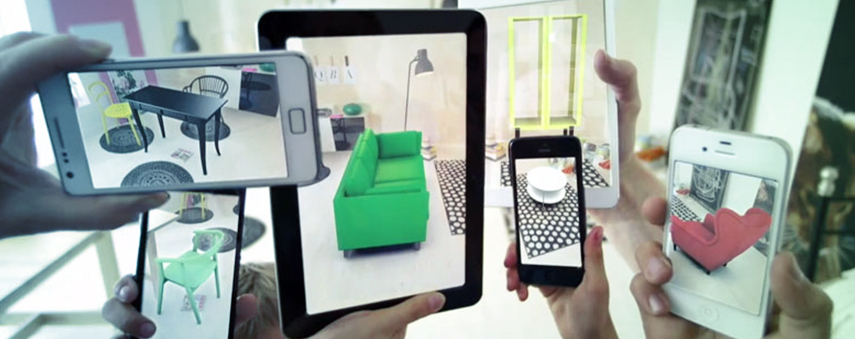How can AR be utilised by businesses and educators?

Augmented reality (AR) has long been popular in mobile gaming and entertainment, but does it have a place in education and business?
In July 2016, an application launched for iOS and Android which changed the face of mobile gaming. Almost everywhere you looked faces were illuminated by screens, necks arched over devices in deep concentration, index fingers swiping furiously. Crowds moved en masse towards the rumours of rare sightings, eager to catch a glimpse of coveted digital beasts.

The app was Pokémon GO, a monster-collecting game created by Niantic. It sent users outside to find hidden creatures and capture them. Based on the global phenomenon and best-selling game Pokémon, the application utilises your device’s camera to superimpose imagery on top of the world you see through your lens. It launched to immediate fanfare, praised for its ability to get people out of the house and interacting with the world around them. To date, the application has been downloaded 550 million times.
Many of the best-known applications of the technology are in mobile games. The most recent of which is Harry Potter: Wizards Unite, also developed by Niantic. Inspired by the Wizarding World of the Harry Potter franchise, players can visit real-world locations to collect artefacts, cast spells and encounter characters from the books and movies. Aside from gaming, how can educators and businesses capitalise on this popular phenomenon?

The role of AR in education
The National Museum of Singapore is currently using augmented reality to enhance their immersive exhibition Story of the Forest. Visitors can download the companion app and use it to see further information about the ethereal images on display or interact with 3D models. The application gamifies the experience, urging people to ‘capture’ creatures and items, in order to drive interaction and develop understanding.
Award-winning developer Gamar has long been creating apps for The British Museum. They developed the hugely successful A Gift for Athena, which offered games and challenges to schoolchildren visiting the Parthenon gallery. The app engages children, captivating and educating them in an accessible way. By matching on-screen silhouettes with sculptures on display, children are rewarded with animations and explanations of their findings.
Some are now seeing the potential of AR to educate, with museums and galleries the world over adopting the technology to enhance their visitors’ experiences and bring visits to life, but how are businesses using AR?
How are businesses using AR?
There seems to be no better fit for augmented reality than in the real estate industry. Too often, potential buyers are put off because they aren’t able to fully realise their vision, put off by a lack of inspiration.
Let’s assume that a client wants to see the kitchen with different countertops or cabinets, or different paint schemes. Using augmented reality, realtors and property developers are able to clearly display their portfolio and offer that vision to potential homebuyers. The level of immersion that AR offers, as opposed to images and videos, saves time and resources and allows for a deeper connection with the product.
Luxury real estate broker Mr Green Homes have embraced AR and VR to give themselves an edge over their competitors. Using Matterport’s Cloud software, they are able to create immersive 3D models of luxury properties, giving potential homebuyers the ability to tour a property remotely, and sellers an extra option for marketing their property.

Managing Director Simon Ward said that they have been using the technology for four years, and it has allowed them to “qualify buyers on how much they like a property to a far greater degree, prior to a physical viewing.”
“If you’re asking someone to drive 100 miles to see a house, they’re only going to do so if they’re pretty sure it’s what they want.”
Simon Ward, Managing Director of Mr Green Homes
Furniture companies like IKEA have also launched their own app. IKEA Place allows shoppers to position true-to-scale furniture in their own home. The catalogue of over 2,000 products can be manipulated, moved and rotated, giving shoppers a chance to try before they buy, all from their own home.
Michael Valdsgaard, IKEA’s Leader of Digital Transformation, said that we are all “really right at the beginning of the big bang with AR and understanding just how it can make everyday life better for people.” IKEA is now developing future additions for the app, including an AI assistant and virtual warehouse, as well as hoping to expand its catalogue to 10,000 placeable items.
The present and future application of augmented reality is exciting and offers much potential to entertainers, educators and businesses, keen to engage and communicate in a unique way. From displaying products to enabling interactive learning and understanding, those who have adopted AR and VR are certainly moving in the right direction, keen to adapt to contemporary trends before they become more commonplace.
